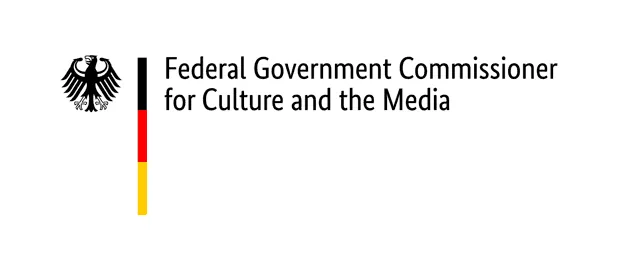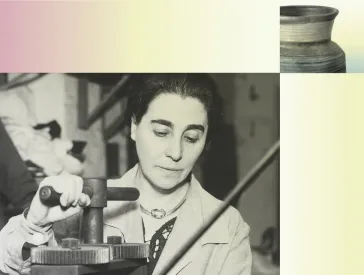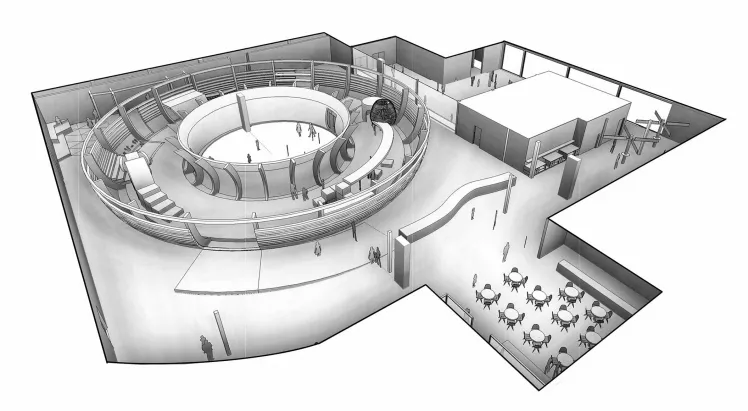
ANOHA
The Children’s World of the Jewish Museum Berlin
A new place for discovery, exploration, and play has taken form, right across from the Jewish Museum Berlin: The ANOHA children’s world opened to young visitors of preschool and grade-school age on 27 June 2021.
The story of Noah’s ark from the Torah takes center stage at the children’s museum. According to tradition, the ark was an enormous boat that Noah used to save his family and all of the animal species from the flood. More than 150 animals are gathered in the heart of the ANOHA children’s world – a gigantic round ark made of wood, designed by the American firm Olson Kundig Architecture and Design.
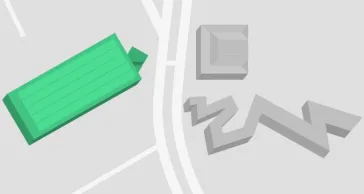
Where
W. M. Blumenthal Academy
Fromet-und-Moses-Mendelssohn-Platz 1, 10969 Berlin
Postal address: Lindenstraße 9-14, 10969 Berlin
Come to the ark! Jewish Museum Berlin, 2021 We would like to thank the main characters from the Grunewald Grundschule and KiTa Grunewald. A production of Cobra Youth Communications GmbH and PS Film. Supported by the German Federal Government Commissioner for Culture and the Media by a resolution of the German Parliament.
Using stories of the creation, flood, and new beginnings that appear in various religions, we want to encourage our youngest guests to think about the respectful coexistence of people, animals, and nature, and to embolden them to take action toward a diverse and better world.
In the Ark
Many animals live in the ark – large and small ones, popular animals and outsiders. We invite the children to accompany the animal passengers, take care of a zebra, cow, or one of their friends, and to contribute to their well-being.
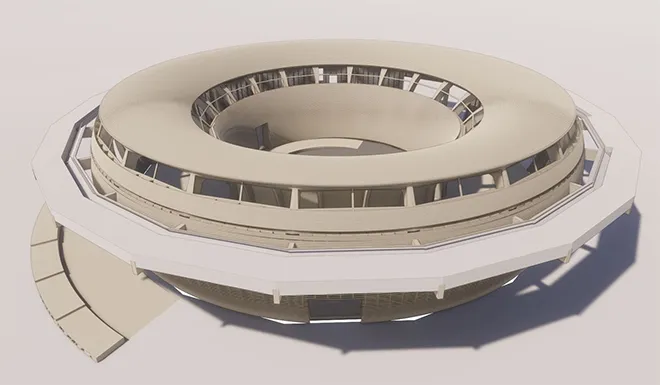 X
X
Preliminary model of the Ark. Jewish Museum Berlin; Designed by Olson Kundig Architecture and Exhibit Design
Less popular animals such as the naked mole rat also have their place, standing for respect, openness, and tolerance of anything that may at first seem foreign. The extinct mammoth, as well as endangered animals such as polar bears draw attention to environmental problems, their consequences, and our possibilities for action.
All of the animals were created by selected artists using recycled materials. The sculptures can be explored in a number of ways – they can be used as monkey bars, hammocks, and snuggle caves. Some of the animals can produce noises, others contain treasures.
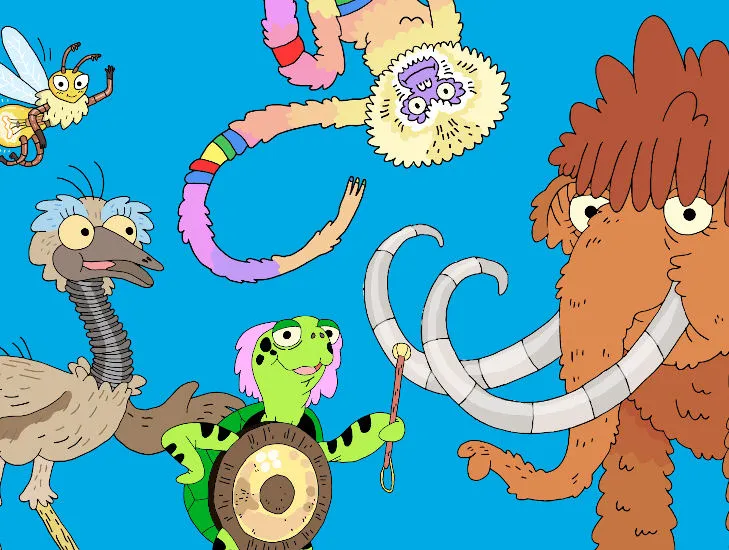 X
X
Animals large and small from around the world populate the Ark and invite children to climb, make music, or feed them. The mammoth might look something like this. Jewish Museum Berlin; Designed by Olson Kundig Architecture and Exhibit Design
First impressions from the ANOHA Children’s World
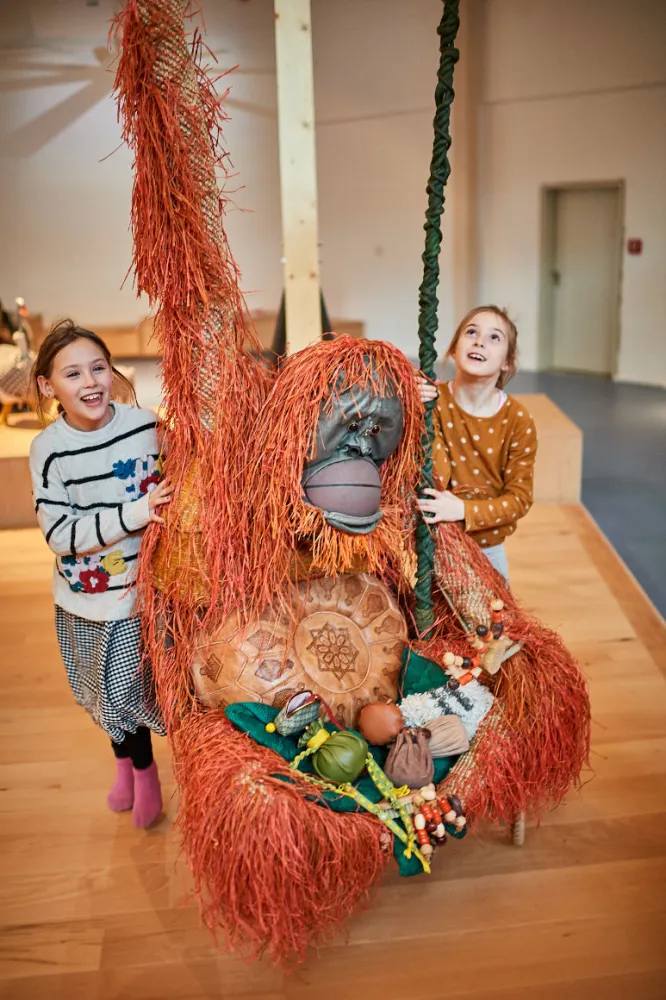
The orangutan is one of 150 animal sculptures that bring the story of Noah's Ark to life at the children's museum; Jewish Museum Berlin, photo: Yves Sucksdorff
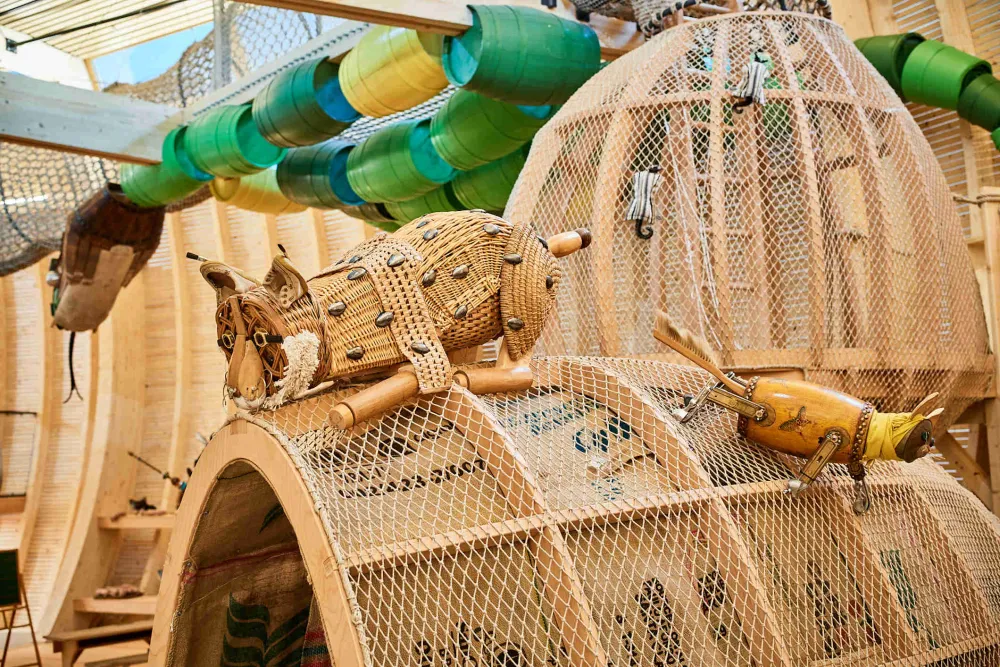
A round wooden ark stands at the center of the children's museum. In and around it, animals large and small from around the world fly, stand, and crawl; Jewish Museum Berlin, photo: Yves Sucksdorff
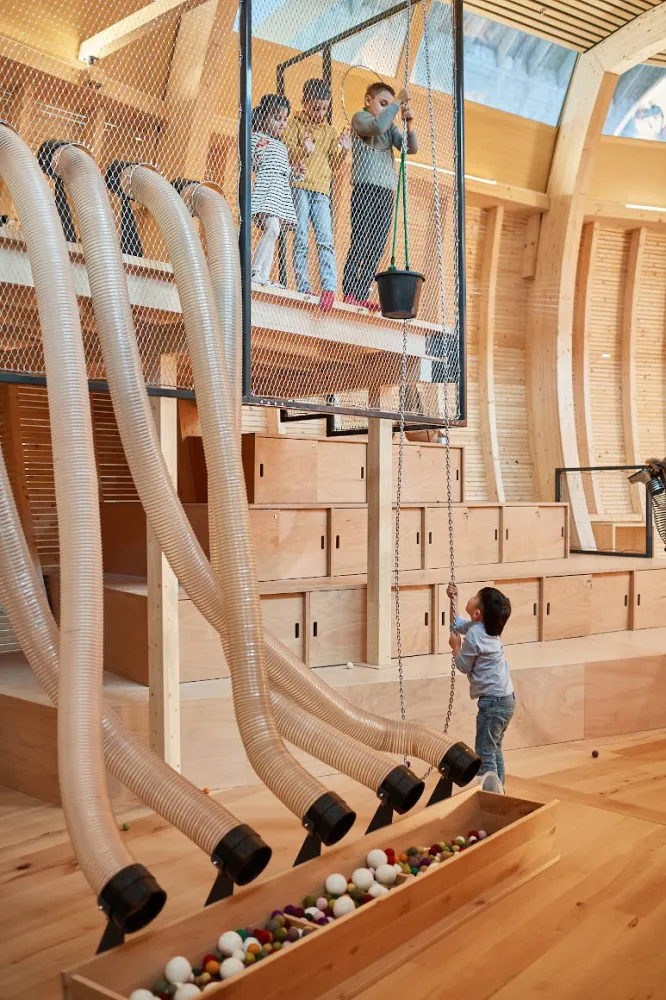
ANOHA offers children ages three to twelve many possibilities to play, experience, and learn; Jewish Museum Berlin, photo: Yves Sucksdorff
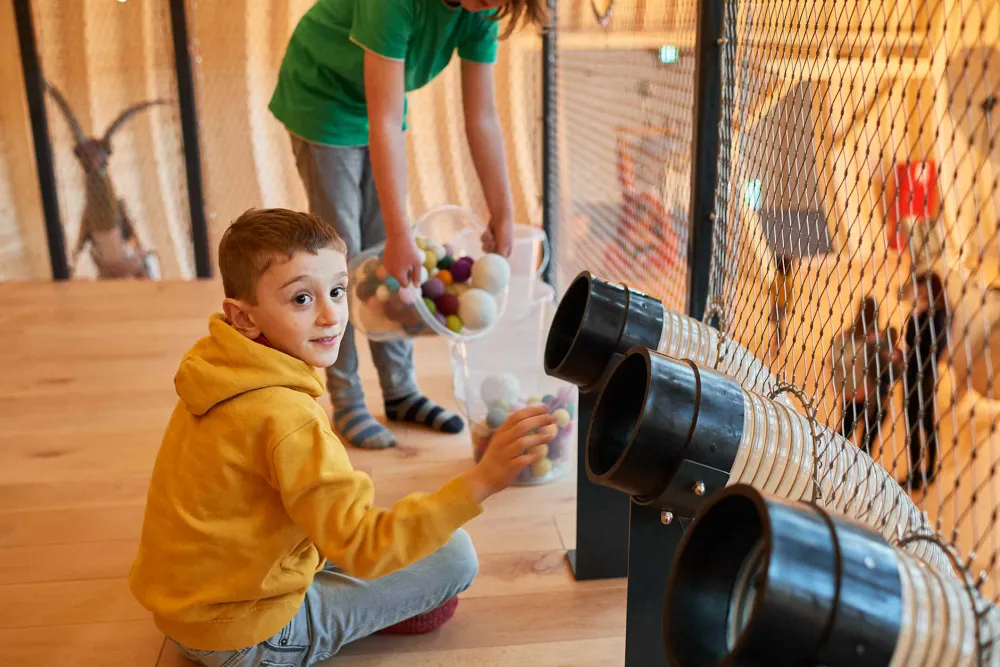
Children can take the initiative at many play stations. At this station, they assemble the right food for each animal; Jewish Museum Berlin, photo: Yves Sucksdorff
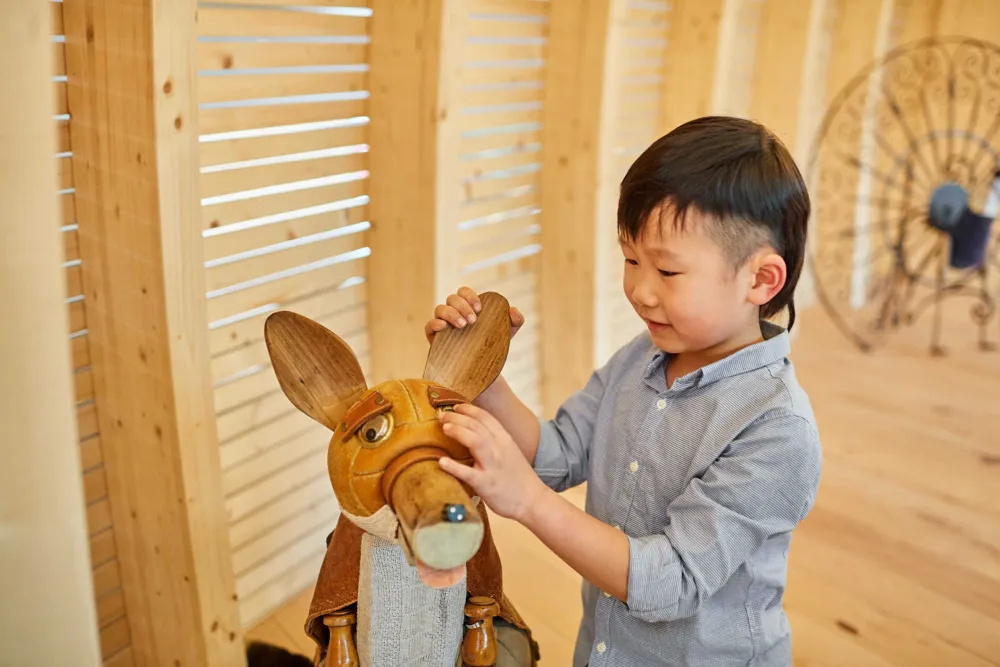
Various artists made the animal sculptures from used objects and recycled materials; Jewish Museum Berlin, photo: Yves Sucksdorff
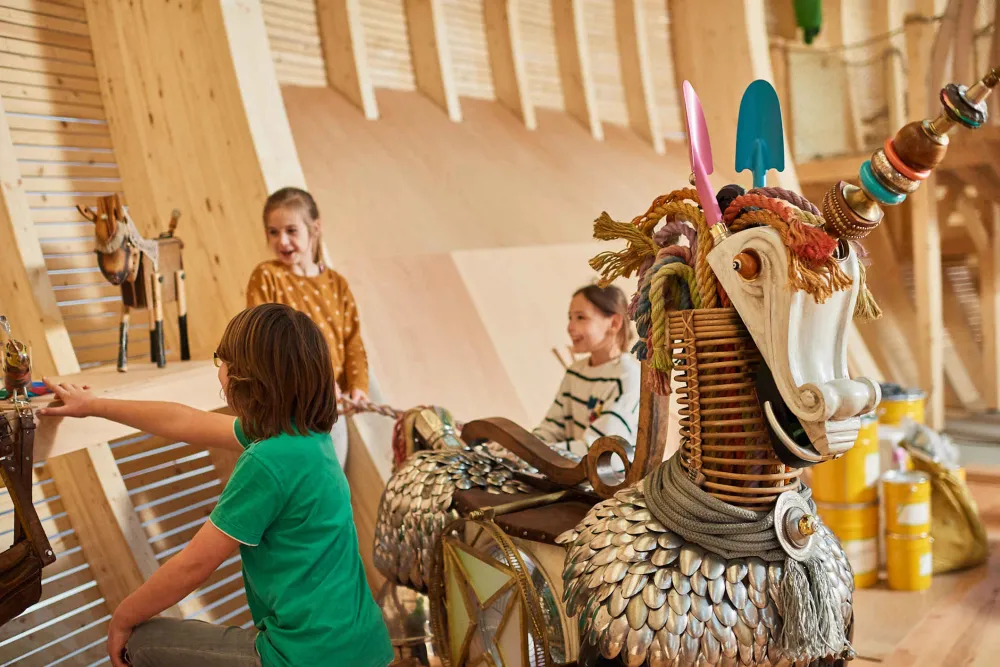
An advisory council made up of 20 grade-school children was involved in developing and planning ANOHA; Jewish Museum Berlin, photo: Yves Sucksdorff
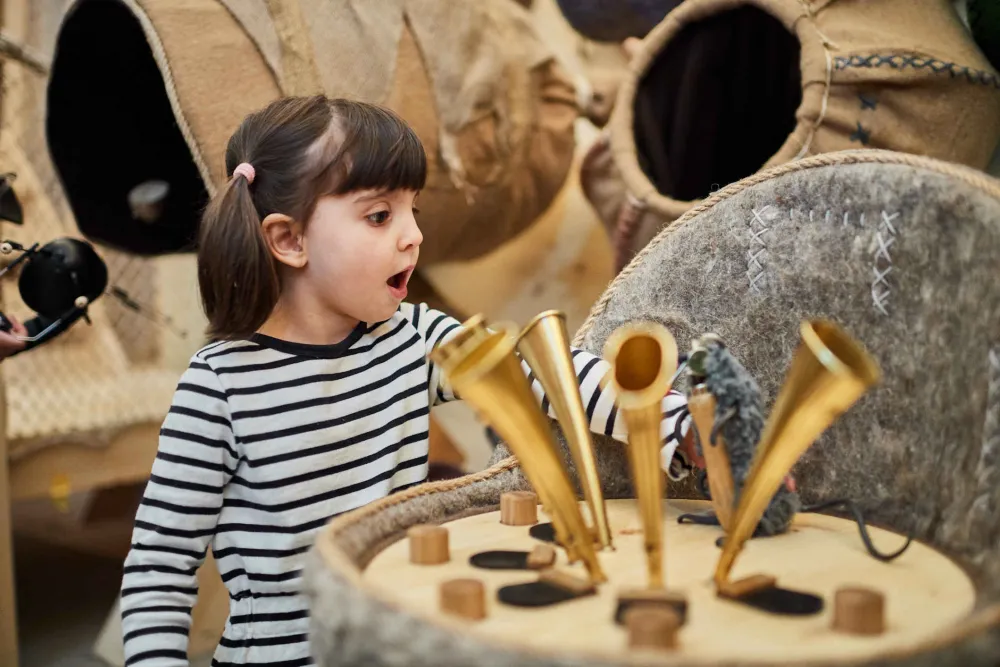
Through its inclusive approach, children can explore the museum using various senses—for example at the station "Smell like a rat does"; Jewish Museum Berlin, photo: Yves Sucksdorff
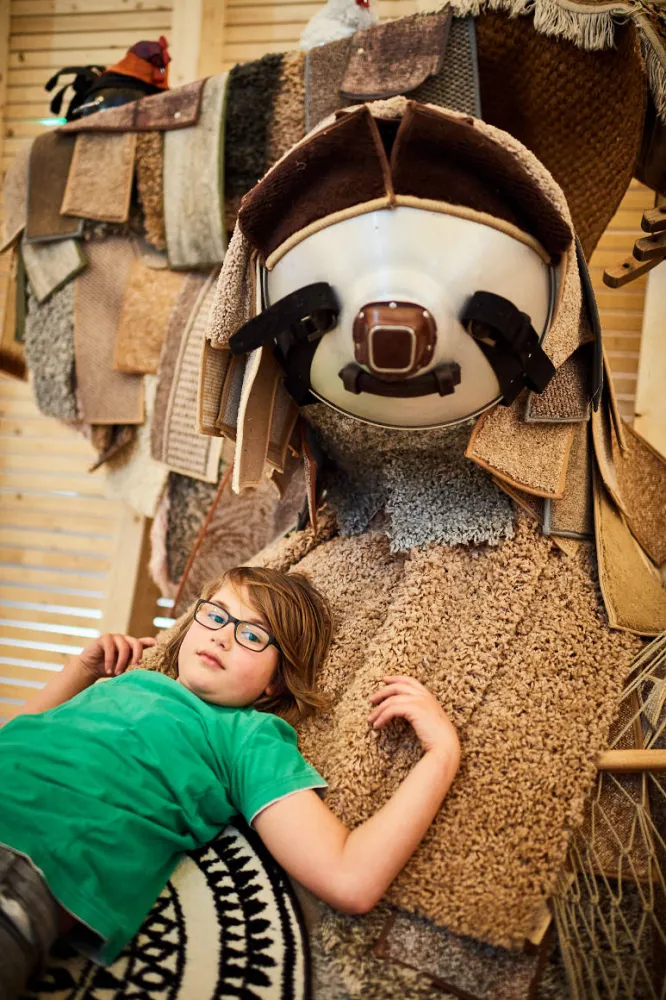
In the relaxed atmosphere, children are encouraged to think about big questions of the world, about nature and the environment, as well as about identity and diversity; Jewish Museum Berlin, photo: Yves Sucksdorff
Offerings for Children and Families
The ANOHA children’s world also contains several workshop rooms and studios – plenty of space for being creative, making music, putting on plays, and making something new together. In this way, the Jewish Museum Berlin expanded its existing program for children and youth, with workshops specially designed for children and families, preschool and grade-school groups, as well as education professionals.
You’ll find more information on ANOHA’s child-oriented website https://anoha.de.
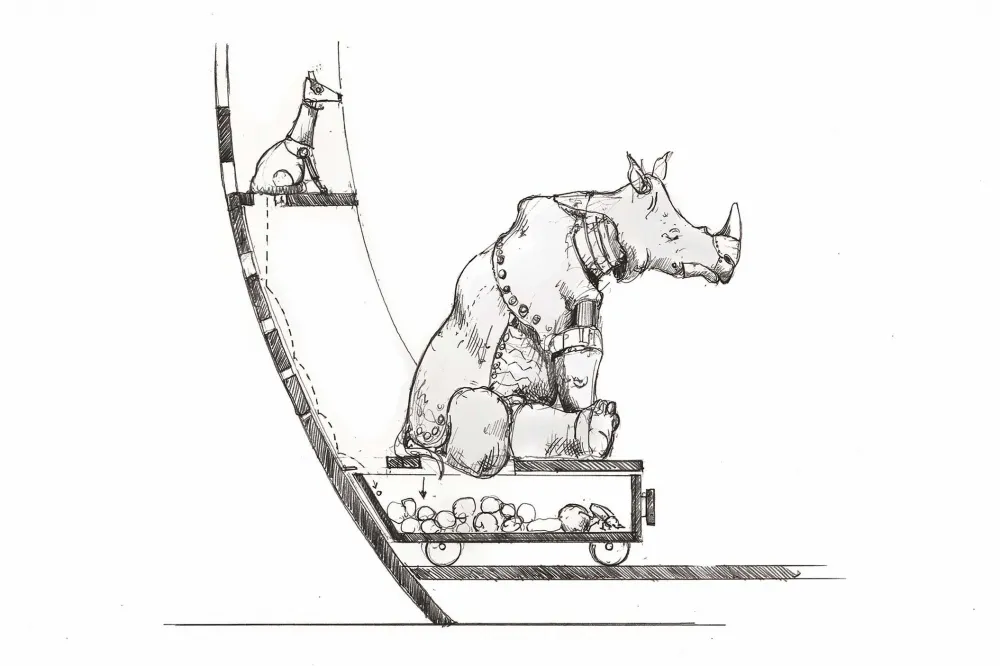 X
X
The animals in the exhibition were constructed using found objects and recycled materials. Jewish Museum Berlin; Designed by Olson Kundig Architecture and Exhibit Design
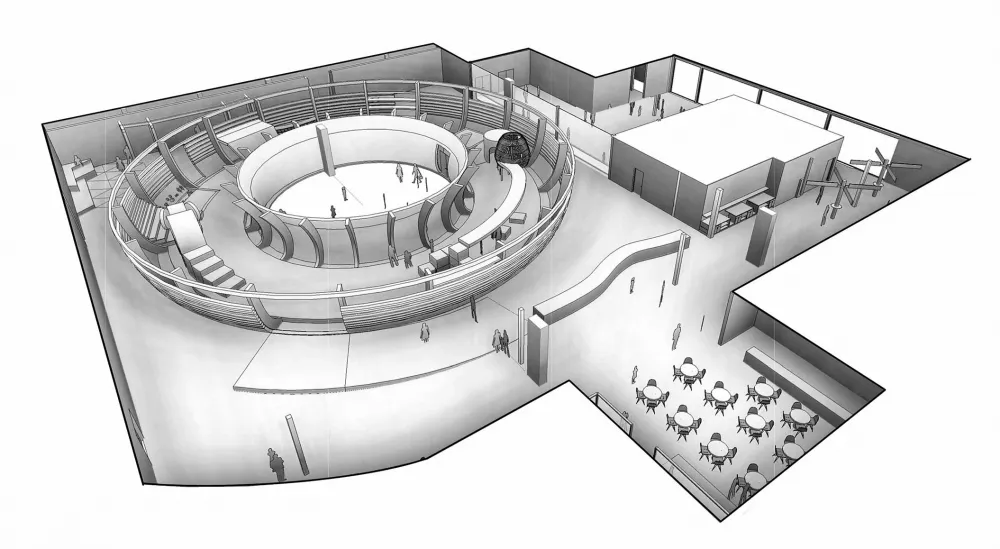 X
X
Design for the Children’s Museum including the entranceway, lobby, bistro, and exhibition spaces. Jewish Museum Berlin; Designed by Olson Kundig Architecture and Exhibit Design
Early Excellence
The Children’s Museum and its programs follow the approach of “early excellence,” which emphasizes the importance of encouraging and educating children even before they start school. With the Children’s Museum, we aim to create an attractive environment for families with small children right in the middle of the city. Its location in our immediate neighborhood is especially important to us. We initiate collaborative partnerships and make connections with other institutions to create an open, family-friendly, and culturally diverse meeting place.
Supported by
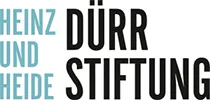
Children as Advisors
A dedicated Children’s Advisory Council has played an active role in shaping the new museum’s deveopment. The advisory council consists of children between the ages of eight and eleven.
In regular meetings, the children put forward their wishes for the museum and its educational programming. We discuss, develop, dream up, and discard new ideas. The workshops are designed and conducted using cultural education methods with the involvement of outside artists.
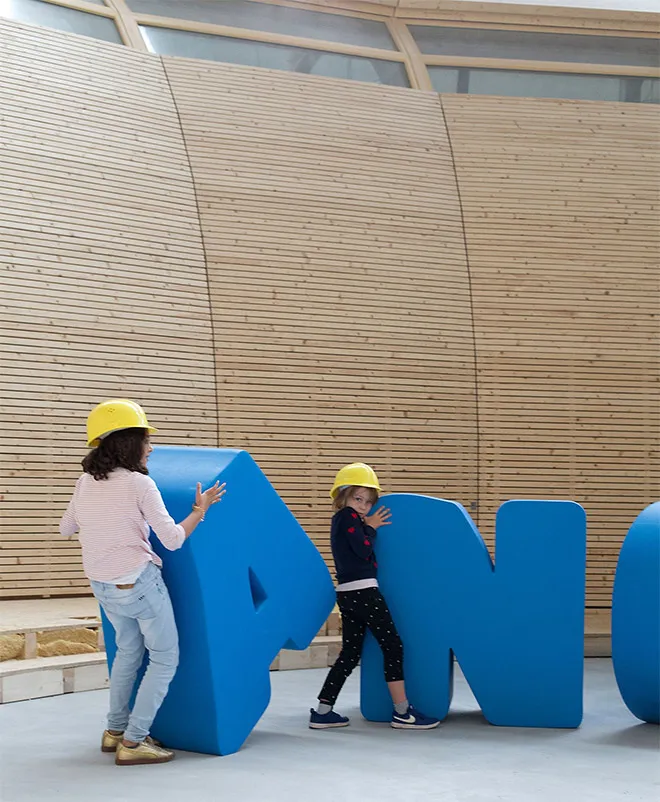 X
X
Children of our Children’s Advisory Council welcome the name of the new children’s world; Jewish Museum Berlin, photo: Sibylle Baier
Some of the Activities of our Children’s Advisory Council
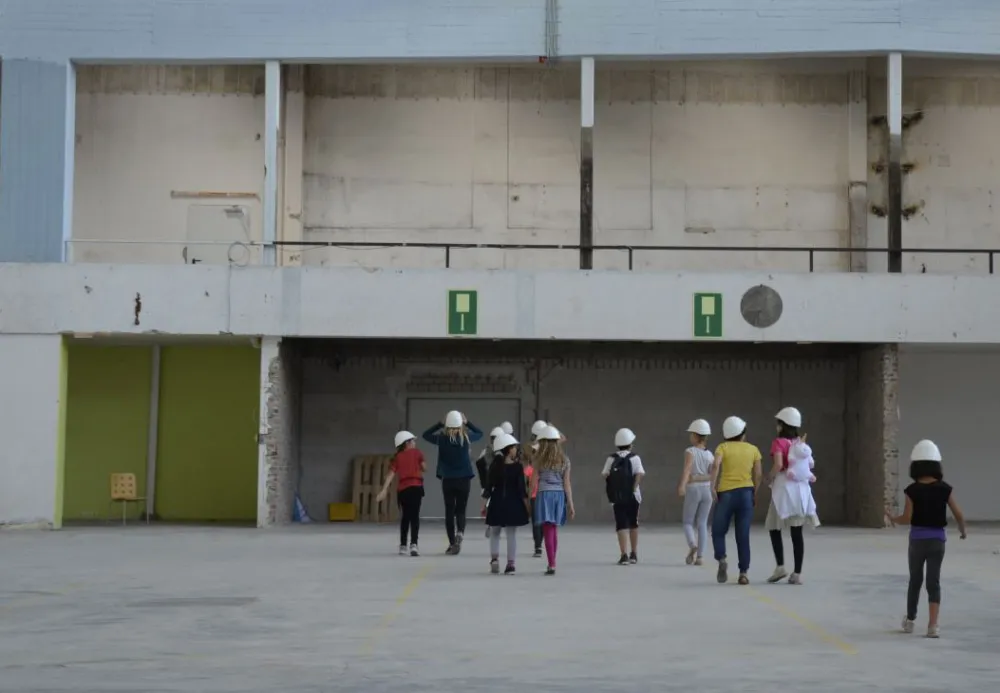
The Children’s Advisory Council conducts a preliminary inspection of the building where the Children’s Museum will be constructed. Jewish Museum Berlin, photo: Anke Dietrich
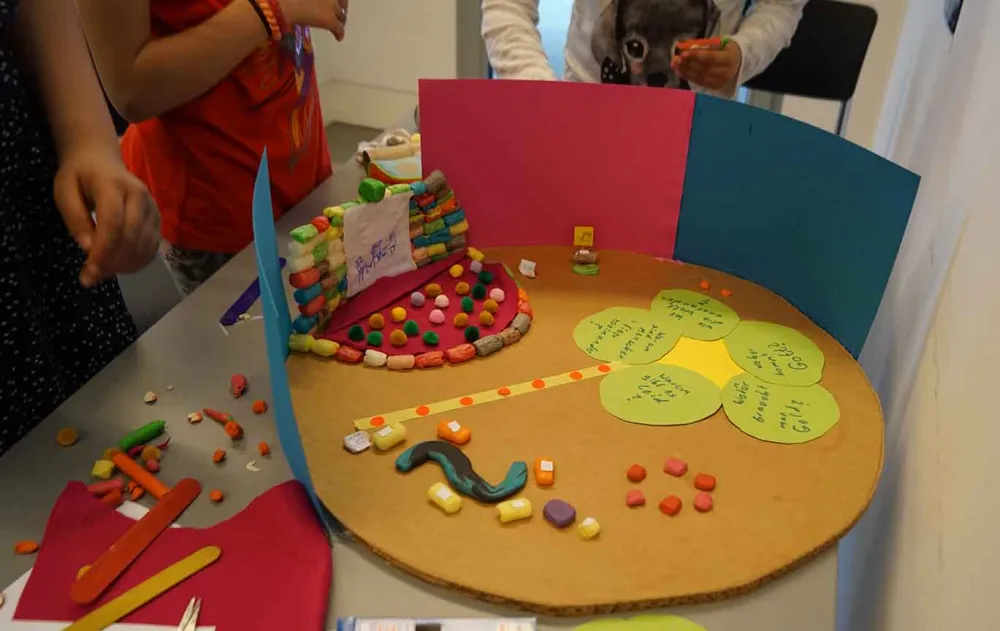
In this workshop, the children are asked: “What kind of space do we need in order to dream up a different, better world?” They arranged the space as they saw fit. Jewish Museum Berlin, photo: Valeska Wolfgram
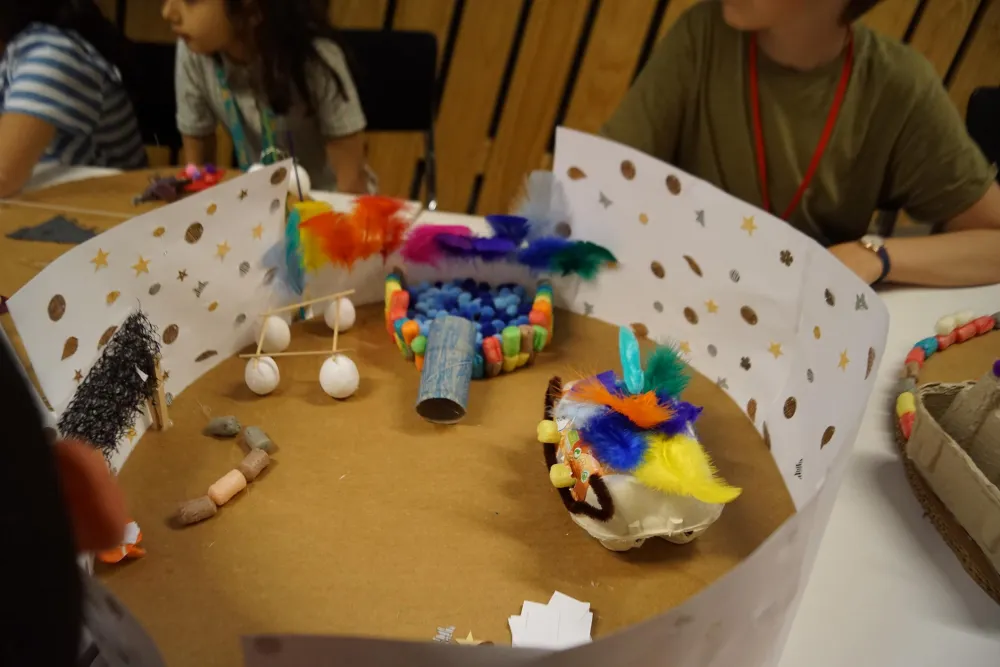
The children were given a round base to match the architecture of the Ark’s open interior. Jewish Museum Berlin, photo: Valeska Wolfgram
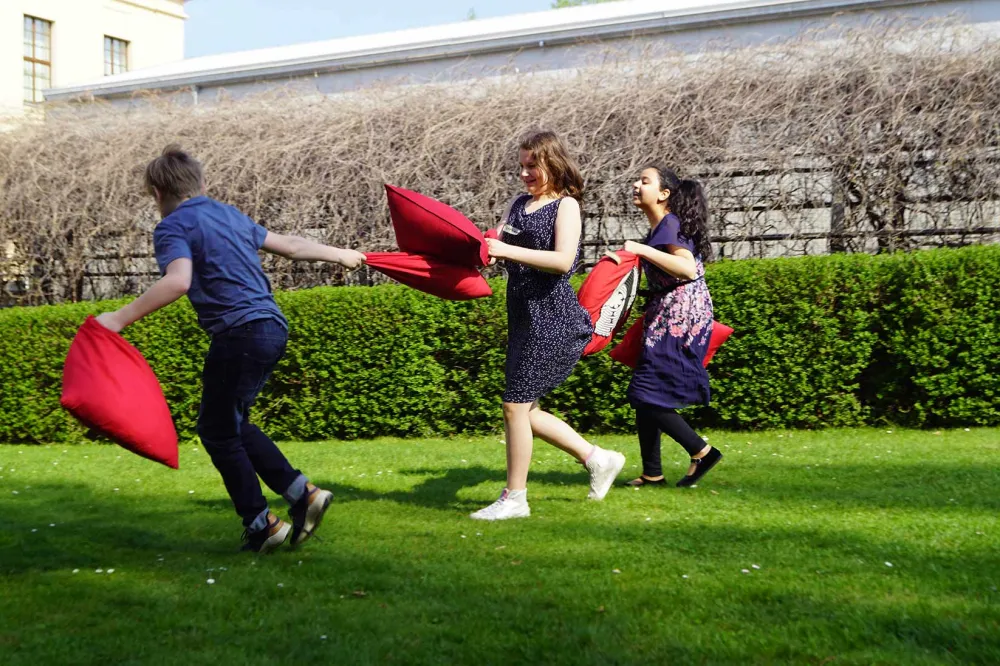
Of course, they also had time to play in the Museum Garden. Jewish Museum Berlin, photo: Valeska Wolfgram
Sustainable Construction
We were also thinking about sustainability in our construction of the Children’s Museum. The load-bearing walls and ceilings are made of regional, sustainable raw materials, primarily wood. We have also largely forgone a mechanical air ventilation system, opting for a concept of natural air circulation instead.
Project Partners
The Children’s Museum was created in collaboration with the Seattle-based agency Olson Kundig Architecture and Exhibit Design. Olson Kundig has a worldwide reputation for its innovative exhibition and educational concepts. The architects have received several awards for ANOHA:
- BETTER FUTURE WILD Design Award, 2023
- Architizer A+ Awards, Winner, Gallery & Exhibition Spaces Category, 2023
- Architizer A+ Awards, Finalist, Architecture + Community, 2023
- Architect’s Newspaper Best of Design Awards, Honorable Mention, Exhibition Design Category, 2022
- Chicago Athenaeum American Architecture Awards, Honorable Mention, 2022
- AIA Seattle Honor Awards, Award of Merit, 2021
- AIA Northwest and Pacific Region Design Awards, Honor Award, 2020
- Interior Design Best of Year Awards, Winner, Kids' Zone Category, 2020
The Jewish Museum Berlin would like to thank all its supporters for their trust and their generosity.
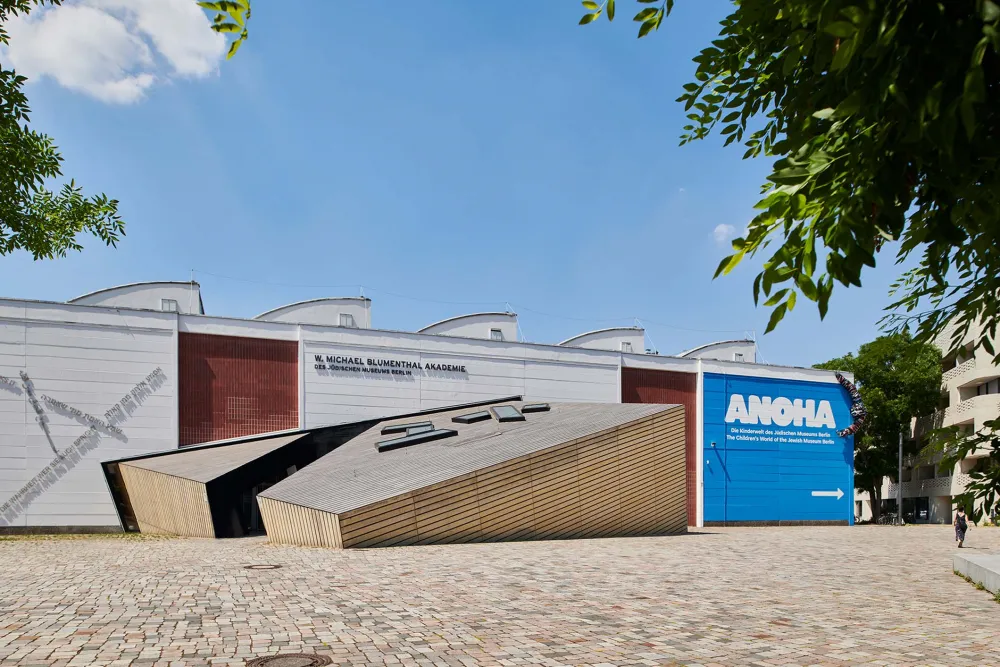 X
X
The Children’s Museum was built behind the W. Michael Blumenthal Academy, in a former wholesale flower market. In 2012, the Academy was redesigned by the architect Daniel Libeskind, who also designed the museum building across the street. Jewish Museum Berlin, photo: Yves Sucksdorff
With funding provided by the Federal Government Commissioner for Culture and the Media on the basis of a resolution by the German Bundestag.
